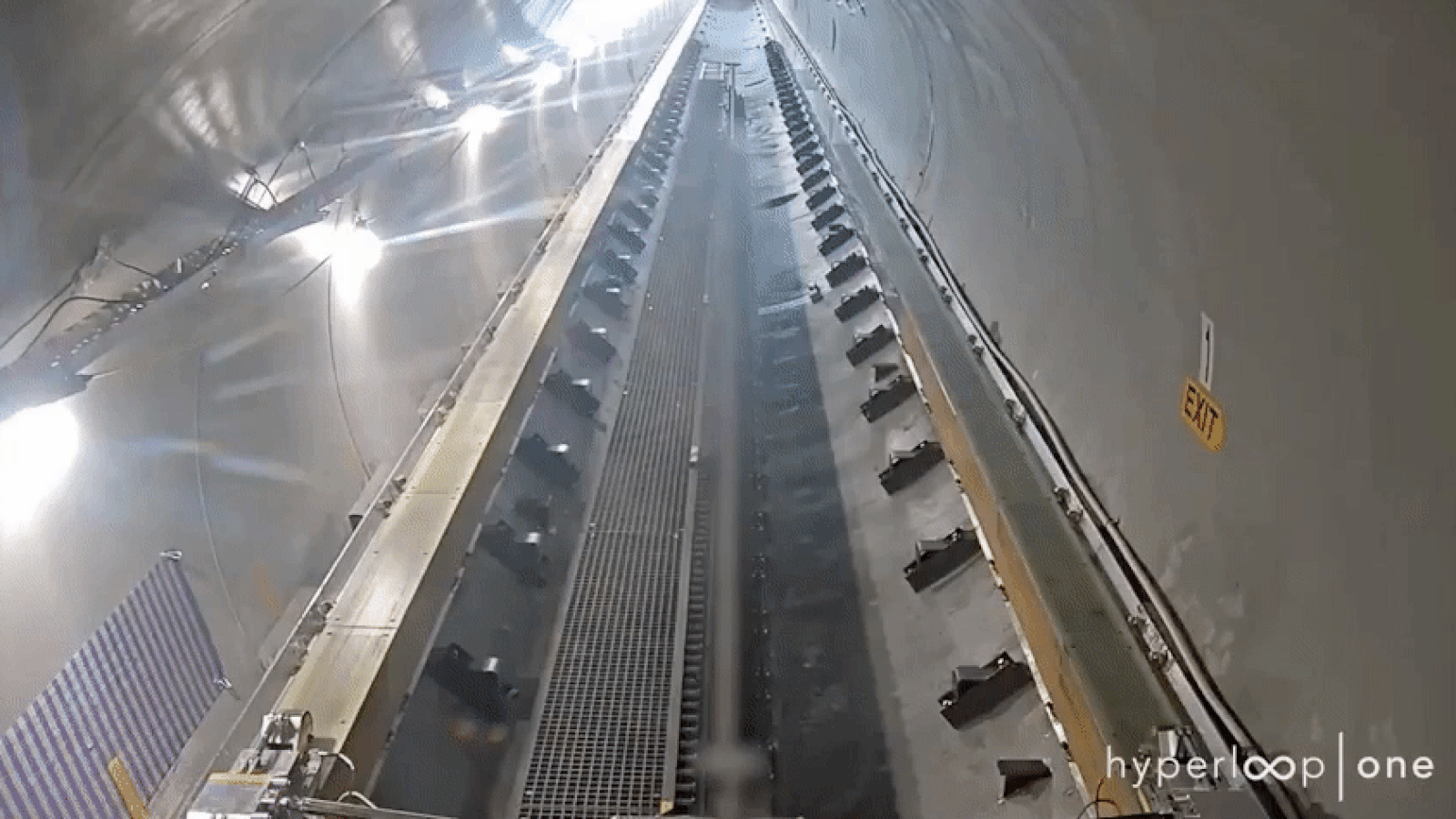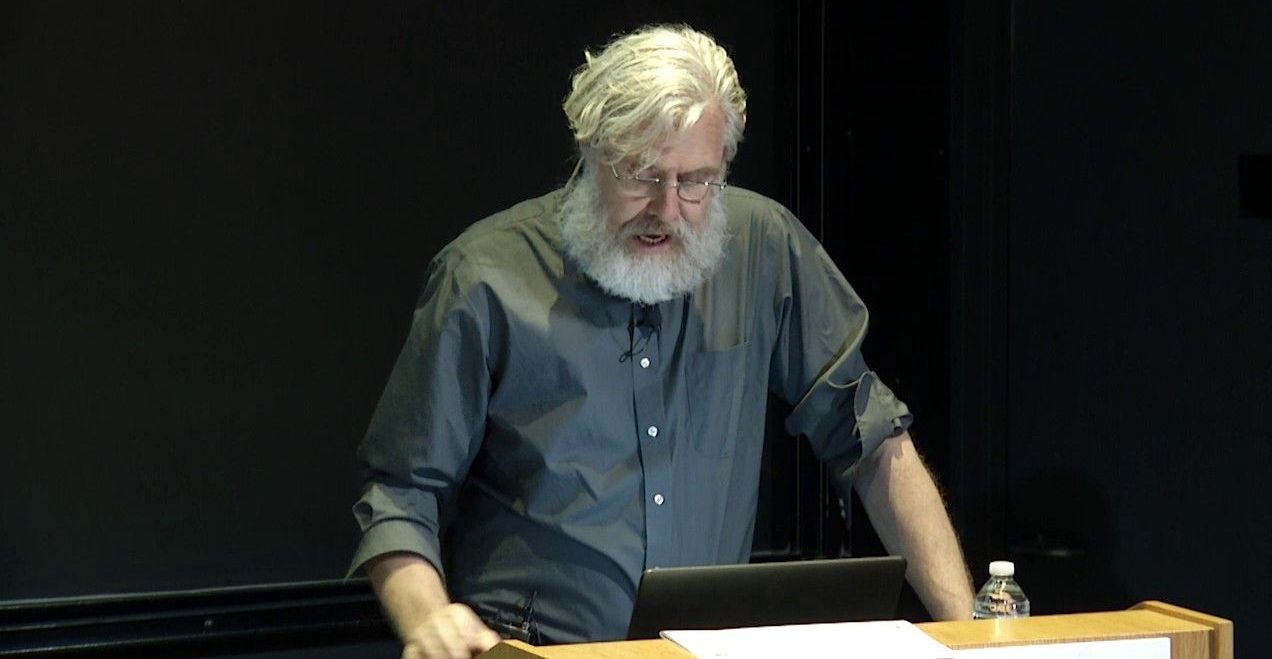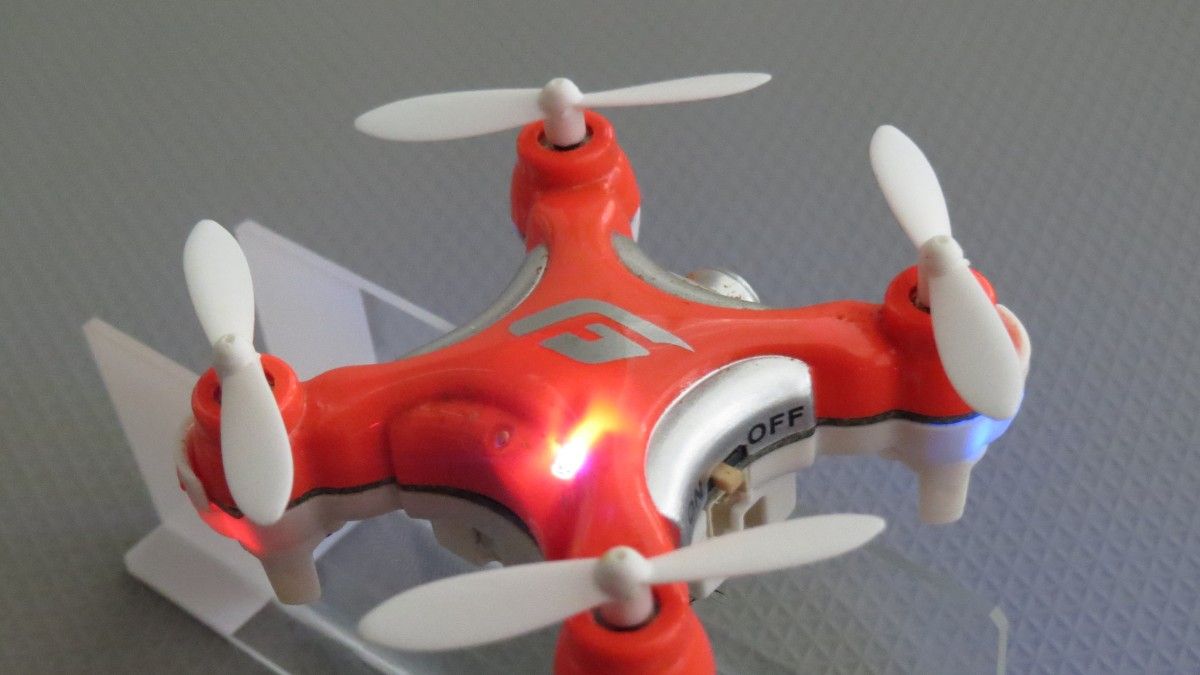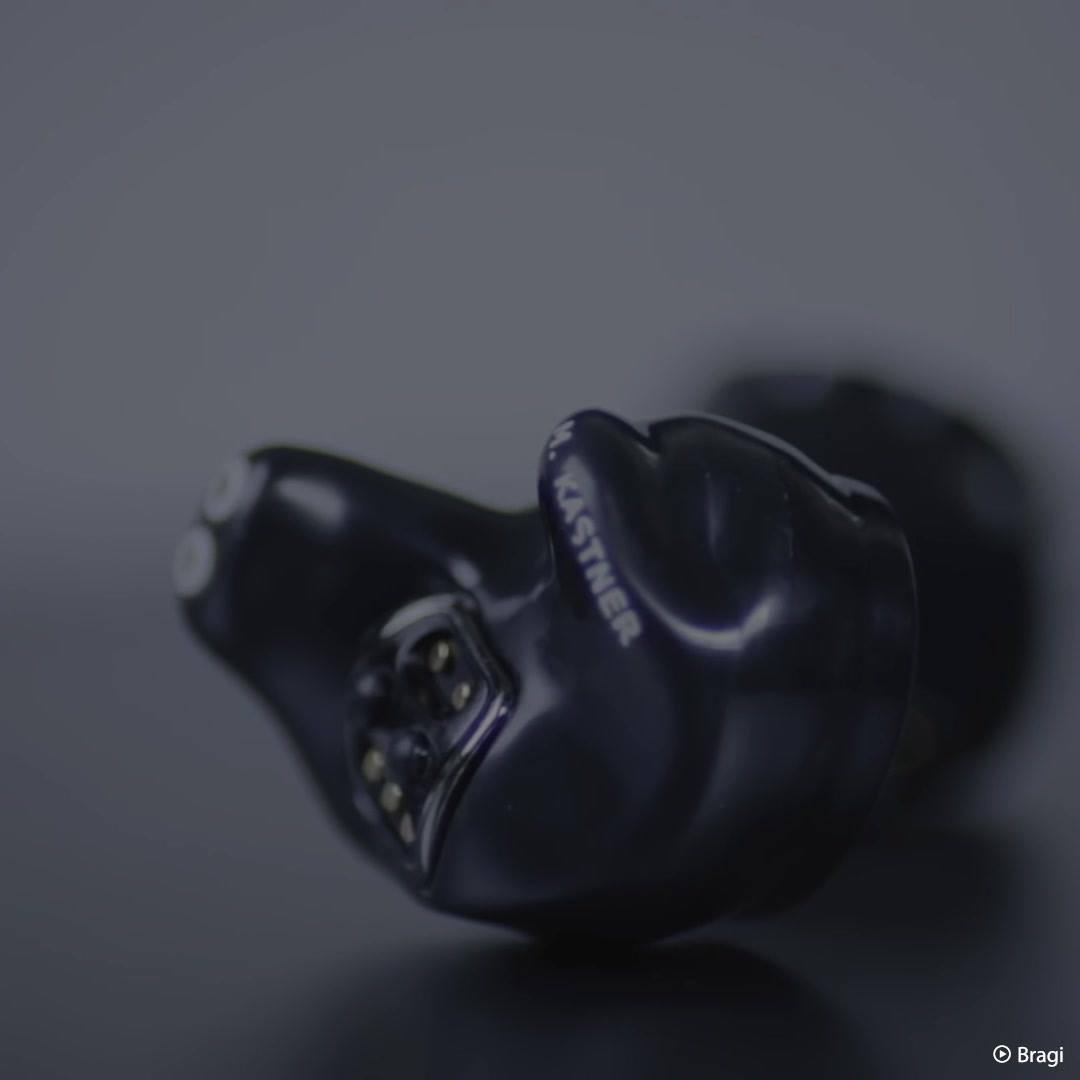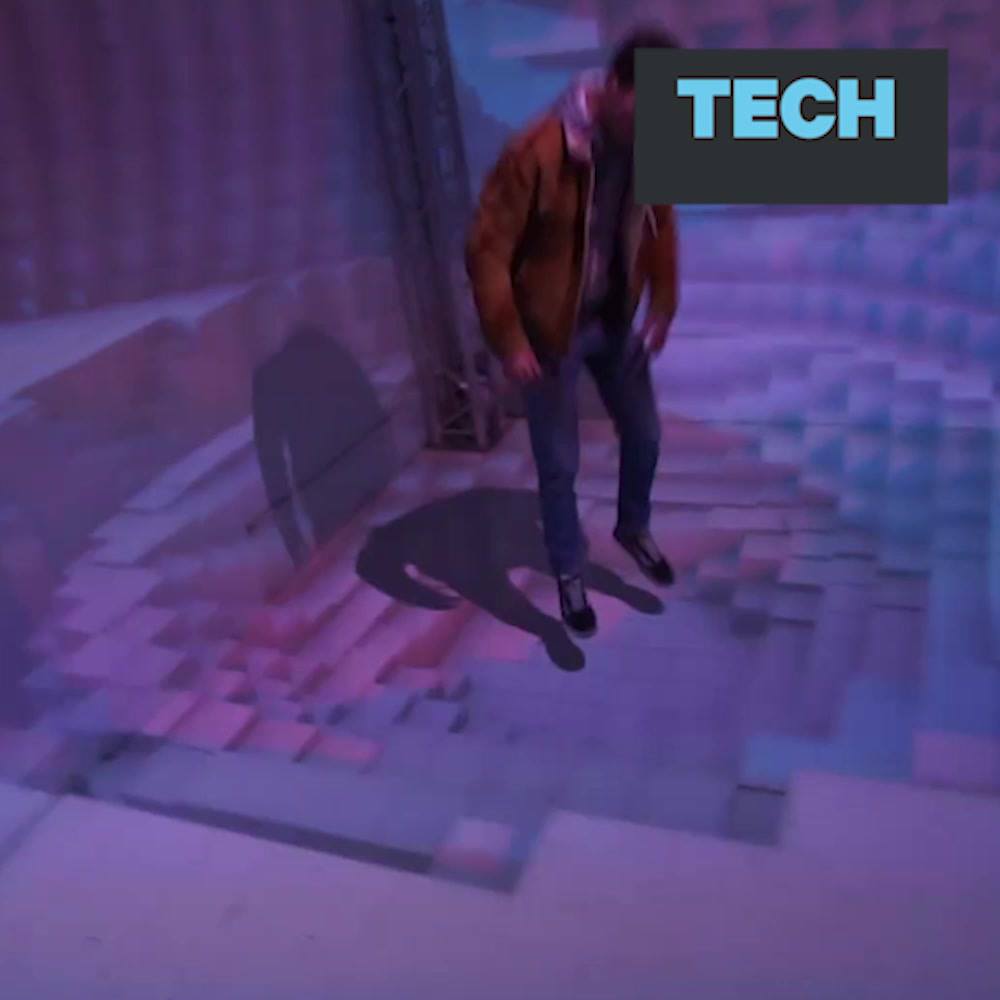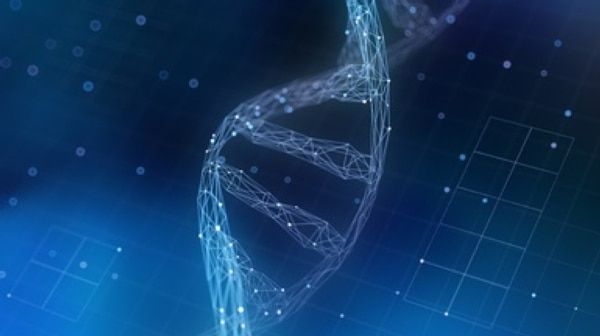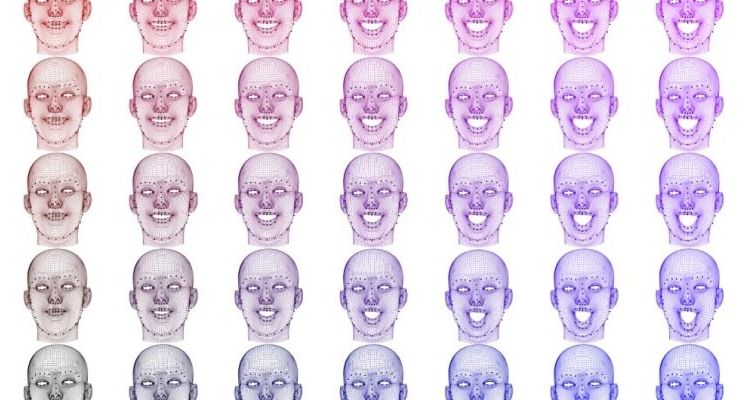Hyperloop One completed the first full-scale test of its hyperloop technology in a vacuum environment on May 12th, the company announced today. In the test, the company’s hyperloop vehicle — which uses magnetic levitation, or mag-lev, technology — pulled 2 Gs while reaching 70 miles per hour down the length of the company’s test track in Nevada.
Hyperloop One also shared images of its new pod with The Verge. The aerodynamic pod is 28 feet long and constructed of structural aluminum and carbon fiber. Using electromagnetic propulsion and mag-lev technology, it’s designed to carry both cargo and human passengers at near supersonic speeds, Hyperloop One says.
